Rifftides: January 2010 Archives
The pianist and singer Joyce Collins died recently in Los Angeles following a long illness. She was 79. Highly respected in jazz circles, Collins played with a sensitive touch and subtle use of chords. Her singing was an outgrowth of those values, with attention to interpretation of the meaning of songs and, as Marian McPartland put it, "...deep feeling, a way of lingering over certain phrases, telling her story in a very 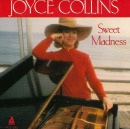 poignant way." Collins's recorded debut as a leader had Ray Brown on bass and Frank Butler on drums. Earlier, she worked with Bob Cooper and Oscar Pettiford, among others, later toured and recorded as a pianist and vocalist with singer Bill Henderson and played with Benny Carter. Collins's following included many musicians who sought out her gigs, which became increasingly rare in recent years as she depended increasingly on teaching for a living. Most of the recordings under her own name and with Henderson have become collectors items going for elevated prices on Amazon or as bargain LPs on eBay, but one of her best, Sweet Madness, with bassist Andy Simpkins and drummer Ralph Penland, is still in print.
poignant way." Collins's recorded debut as a leader had Ray Brown on bass and Frank Butler on drums. Earlier, she worked with Bob Cooper and Oscar Pettiford, among others, later toured and recorded as a pianist and vocalist with singer Bill Henderson and played with Benny Carter. Collins's following included many musicians who sought out her gigs, which became increasingly rare in recent years as she depended increasingly on teaching for a living. Most of the recordings under her own name and with Henderson have become collectors items going for elevated prices on Amazon or as bargain LPs on eBay, but one of her best, Sweet Madness, with bassist Andy Simpkins and drummer Ralph Penland, is still in print.
Collins was born in Nevada and went to college in northern California, but not for long, for a reason I explain in Take Five: The Public and Private Lives of Paul Desmond.
...Joyce Collins, like Desmond, was a musician not majoring in music. Dave Brubeck heard her in 1947 playing in a bar in Stockton, where she was a student at Stockton Junior College. He thought she was too good a musician for Stockton J.C. and recommended that she move to San Francisco and study with his piano teacher, Fred Saatman.
"I don't know why," she said, "since I didn't know who he was, but I took his advice. I went to San Francisco State, enrolled as a liberal arts major, called up Fred Saatman and started with him."She found herself in two classes with Paul Desmond, one on Shakespeare, another on the American novel.
"I'd go plugging along, never missed a class, studied hard. Lucky to get a C. He rarely came to class. He'd breeze in, always looking sleepy. Literarily brilliant, but sleepy. And of course he got A's. I was so shy and so in awe of him, I was tongue-tied. It was hard for me to make conversation, but I always used to say to him, 'We're the hare and the tortoise.' He was so witty. He was talking to a girl and I kind of overheard him, and he said, 'There's a vas deferens between us.' I thought it was the wittiest thing I'd ever heard. It went around. People quoted that."
For more about Joyce Collins, including a rare piece of video, see Bill Reed's blog, The People vs. Dr. Chilledair.
If you have seen videos filmed at the Montmartre club in Copenhagen in the 1950s and '60s, you may have wondered about the stylized wall masks that often show up in the opening moments. Rifftides reader Dave Bernard has wondered about them, too. Mr. Bernard researched the masks and reports the results in the comments section of a recent post about Bud Powell. To see the masks and what he has learned, go here.
While we're at it, we may as well enjoy more of Powell at the Montmartre with bassist Niels-Henning Ørsted Pedersen and drummer Jorn Elniff in 1962. During the first minute of the video, there is a wide shot of the wall of masks. Despite YouTube's lower-third card, the proper title of Thelonious Monk's piece is "'Round Midnight," not "Around Midnight."
1947 was a good year for movies. It saw the release of Miracle on 34th Street, Gentleman's Agreement, Life with Father, Lady from Shangai and Out of the Past, among other excellent films. New Orleans also hit the screen that year. It began life as an Orson Welles project, but Welles dropped it and went on to other things. If he had developed it, the movie might not have been in a league with Citizen Kane, but it would likely have had more to recommend it than the music. Unlike the other films mentioned above, New Orleans had an absurd story line, leaden dialogue and mediocre direction. Its take on the history of jazz is pure cliché, except for one element: the importance of Louis Armstrong. He, Billie Holiday, Woody Herman, Kid Ory and a raft of other musicians save the film and make it worth seeing again and again, even if you have to grit your teeth waiting for the next song.
In his new biography of Armstrong, Terry Teachout quotes the 1947 review by critic Bosley Crowther of The New York Times: "Put it down as a fizzle in every respect but one. That is the frequent tooting of Louis Armstrong on his horn." Maybe Crowther dozed off during "The Blues Are Brewin'," with Holiday, Armstrong and Herman. Herman's alto saxophone half-chorus demonstrates that he is underrated as a soloist. Holiday's long solo confirms that she is not.
Maybe it was the holidays. Maybe I've been busy writing for a living. Maybe I'm lazy. Well, no matter. You finally have a new edition of Doug's Picks. Consult the center column for the latest recommendations.
Here is a lovely opportunity to hear and see two masters toward the ends of their lives. Oscar Peterson played at the Montreal Jazz Festival in July of 2004 with bassist Niels-Henning Ørsted Pedersen, guitarist Ulf Wakenius and drummer Alvin Queen. The piece is "Cakewalk."
NHØP died the following April, Peterson in December of 2007. To see other videos from their Montreal concert, go here.
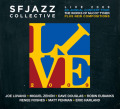 SFJAZZ Collective, Live 2009 (SFJazz). Last year's tour by the all-star septet was built around their arrangements of music by pianist McCoy Tyner. It also included new compositions by its members, Joe Lovano, Miguel Zenón, Dave Douglas, Robin Eubanks, Renee Rosnes, Matt Pennman and Eric Harland. This two-CD set, recorded in halls across the US, is a tribute to Tyner, offering invigorating playing and writing by members of a younger generation he influences. Among the new pieces, Zenón's "No Filter" and Rosnes's "Migrations" stand out.
SFJAZZ Collective, Live 2009 (SFJazz). Last year's tour by the all-star septet was built around their arrangements of music by pianist McCoy Tyner. It also included new compositions by its members, Joe Lovano, Miguel Zenón, Dave Douglas, Robin Eubanks, Renee Rosnes, Matt Pennman and Eric Harland. This two-CD set, recorded in halls across the US, is a tribute to Tyner, offering invigorating playing and writing by members of a younger generation he influences. Among the new pieces, Zenón's "No Filter" and Rosnes's "Migrations" stand out.
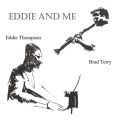 Eddie Thompson and Brad Terry, Eddie and Me (Living Room). Thompson, a blind British pianist, spent ten years in the US before he returned home in 1972. He performed often around New York with Terry, a peripatetic clarinetist whose brilliant work would be better known if he had pursued a conventional career. This album, finally reissued on CD, captures their empathy, harmonic audacity and wit. It is available as a download here and as a CD by e-mailing here. Full disclosure: I wrote a pro bono blurb for the package. And I'd do it again.
Eddie Thompson and Brad Terry, Eddie and Me (Living Room). Thompson, a blind British pianist, spent ten years in the US before he returned home in 1972. He performed often around New York with Terry, a peripatetic clarinetist whose brilliant work would be better known if he had pursued a conventional career. This album, finally reissued on CD, captures their empathy, harmonic audacity and wit. It is available as a download here and as a CD by e-mailing here. Full disclosure: I wrote a pro bono blurb for the package. And I'd do it again.
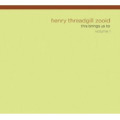 Henry Threadgill Zooid, This Brings Us To, Volume 1 (PI Recordings). Threadgill names his band Zooid after a cell "that is able to move independently of the larger organism to which it belongs." Accordingly, five musicians simultaneously and freely invent within, around and through structures devised by saxophonist and flutist Threadgill, one of the leading lights of the avant AACM movement. The music has moments of amusing bluster, others of reflective calm. Its intricacy demands patient listening.
Henry Threadgill Zooid, This Brings Us To, Volume 1 (PI Recordings). Threadgill names his band Zooid after a cell "that is able to move independently of the larger organism to which it belongs." Accordingly, five musicians simultaneously and freely invent within, around and through structures devised by saxophonist and flutist Threadgill, one of the leading lights of the avant AACM movement. The music has moments of amusing bluster, others of reflective calm. Its intricacy demands patient listening.
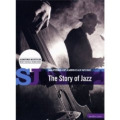 Masters of American Music: The Story Of Jazz (Medici Arts). An opening montage cleverly synchronized to Ellington's "It Don't Mean a Thing if it Ain't Got That Swing" introduces the first in a series whose other initial subjects are Billie Holiday, Charlie Parker and Thelonious Monk. The programs ran on public television in the last century. It is good to have them revived on DVD with crisp picture and sound. The Story Of Jazz features superb performance clips, interesting interviews and a well-written script that has its share of clichés but blessedly few wrong facts.
Masters of American Music: The Story Of Jazz (Medici Arts). An opening montage cleverly synchronized to Ellington's "It Don't Mean a Thing if it Ain't Got That Swing" introduces the first in a series whose other initial subjects are Billie Holiday, Charlie Parker and Thelonious Monk. The programs ran on public television in the last century. It is good to have them revived on DVD with crisp picture and sound. The Story Of Jazz features superb performance clips, interesting interviews and a well-written script that has its share of clichés but blessedly few wrong facts.
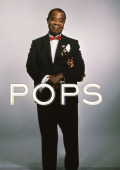 Terry Teachout, Pops: A Life Of Louis Armstrong (Houghton Mifflin). Teachout is a consummate biographer. His books about H.L. Mencken and George Balanchine proved that. With Armstrong, he exceeds himself. Teachout combines the advantage of unique access to Armstrong's archives with deep musical understanding and the gift of writing clearly about complex matters. He makes the reader understand that when the history is told and the analysis finished, there is just one real explanation of how a waif from the underside of life changed music forever: genius. Getting to that point, Teachout takes us on an unforgettable trip.
Terry Teachout, Pops: A Life Of Louis Armstrong (Houghton Mifflin). Teachout is a consummate biographer. His books about H.L. Mencken and George Balanchine proved that. With Armstrong, he exceeds himself. Teachout combines the advantage of unique access to Armstrong's archives with deep musical understanding and the gift of writing clearly about complex matters. He makes the reader understand that when the history is told and the analysis finished, there is just one real explanation of how a waif from the underside of life changed music forever: genius. Getting to that point, Teachout takes us on an unforgettable trip.
A few days into his 79th year, tenor saxophonist Hadley Caliman is thriving in the Pacific Northwest, starring in the Seattle Repertory Jazz Orchestra and leading his own group. As a high school youngster, Haliman was a part of the yeasty Los Angeles jazz community of the late 1940s and early '50s. After college, he went on to record extensively and work with musicians as varied as Gerald Wilson, Don Ellis, Freddie Hubbard, Santana and The Grateful Dead. Jim Wilke recorded Caliman in a recent Seattle Art Museum concert and will present it on his Jazz Northwest program this Sunday, January 24 at 1 pm PST, 4 pm EST. To hear it in the Seattle area, dial up KPLU-FM at 88.5. On the internet, go to KPLU's web site.
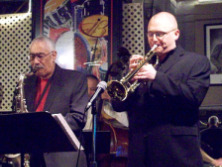 Trumpeter Thomas Marriott (pictured with Caliman) is in the quintet with pianist Eric Verlinde, bassist Chuck Kistler and drummer John Bishop.
Trumpeter Thomas Marriott (pictured with Caliman) is in the quintet with pianist Eric Verlinde, bassist Chuck Kistler and drummer John Bishop.
Here is video of Caliman a couple of years ago playing in the atrium of Seattle's City Hall with some of the other major jazz artists who live in that city. Julian Priester is the trombonist, with Bob Hammer, piano; Buddy Catlett, bass; and Clarence Acox, drums. The sound quality is, well, like something you'd hear in an atrium, but it's an opportunity to listen to five remarkable players in a remote corner of the United States with a rich fund of jazz talent.
Why consider in the same piece albums by pianists as unalike as Matthew Shipp and Greg Reitan? Because in different ways the ghost of Bud Powell informs their music; because pairing them may lead partisans of one to listen to the other and find unexpected rewards; because the profound dissimilarity between the iconoclast Shipp and the modern traditionalist Reitan typifies the wide variety of satisfactions to be found in jazz; and because they are more or less simultaneously releasing new CDs.
Matthew Shipp, 4D (Thirsty Ear).
Shipp's initial inspiration was Bud Powell, who to a great extent is the underpinning of his music. The unfettered approach of the formidable technician and free adventurer Cecil Taylor is a potent strain in Shipp's work, but no matter how far out he goes, Shipp's sense of chord and line movement puts him closer to Powell than Taylor ever was. That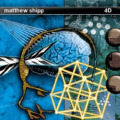 is evident throughout the solo album 4D, nowhere more emphatically than in the roiling forward movement and occasional bebop phraseology of "Equilibrium," which also has hints of Thelonious Monk and Earl Hines. In its opening bars, "Teleportation" bows even lower in Powell's direction.
is evident throughout the solo album 4D, nowhere more emphatically than in the roiling forward movement and occasional bebop phraseology of "Equilibrium," which also has hints of Thelonious Monk and Earl Hines. In its opening bars, "Teleportation" bows even lower in Powell's direction.
Throughout the album, Shipp glimpses other presences; John Coltrane in "Dark Matter" and "Stairs," Taylor in "Jazz Paradox," Ellington in "Prelude to a Kiss." But to dwell on evidence of his influences is to ignore Shipp's originality, which is bolstered by redoubtable technique. He sometimes holds his keyboard prowess in reserve, but when he unleashes it, as he does in a joyful "What is This Thing Called Love," it can be dazzling. In addition to the two standards named above and his compositions (or spontaneous creations; it's difficult to be certain), Shipp applies his daring, ferocity and wit to "Autumn Leaves," "Greensleeves," "What a Friend We Have in Jesus" and "Frere Jacques." "Frere Jacques?" Yes. Shipp proves that it is possible to operate out there on the edge without losing sight of the fundamentals.
Greg Reitan, Antibes (Sunnyside).
Reitan's inner Bud Powell filters through Bill Evans and Denny Zeitlin. If there is direct Powell influence, it is more in his adaptation of harmonic concepts than in a reflection of Powell's manic energy. His keyboard touch and chord voicings are firmly in the Evans school. He shares with Evans, Zeitlin and--consciously or unconsciously--with Keith 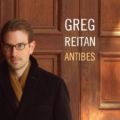 Jarret, the floating time feeling that comes from rhythmic placement relating chords to individual notes. His interpretations of Evans's "Re: Person I Knew" and Zeitlin's "Time Remembers One Time Once" are notable in that regard. The trait also manifests itself in "For Heaven's Sake," the exquisitely understated "In The Wee Small Hours of the Morning" and pieces by Jarrett and Wayne Shorter. Bassist Jack Daro and drummer Dean Koba are effective in support.
Jarret, the floating time feeling that comes from rhythmic placement relating chords to individual notes. His interpretations of Evans's "Re: Person I Knew" and Zeitlin's "Time Remembers One Time Once" are notable in that regard. The trait also manifests itself in "For Heaven's Sake," the exquisitely understated "In The Wee Small Hours of the Morning" and pieces by Jarrett and Wayne Shorter. Bassist Jack Daro and drummer Dean Koba are effective in support.
The tracks with Reitan's own writing are the ones I keep going back to in Antibes. He told Orrin Keepnews, who wrote the admiring liner notes, that when he was preparing the album he had been listening to Glenn Gould play J.S. Bach. The title tune, the unaccompanied "September" and "Salinas" are direct reflections of that experience. Reitan so skillfully conceived them with Bachian rhythmic and harmonic principles and plays them with such precision and dynamic touch that one might almost be willing accept that Gould had come back as a jazz artist. Reitan's Some Other Time was an impressive debut album last year. Antibes shows impressive growth and even greater potential.
No one could play like Bud; too difficult, too quick, incredible!--Thelonious Monk
Bud is a genius.--Charlie Parker
Bud is a genuine genius.--Duke Ellington
He laid down the basis of modern jazz piano.--Dizzy Gillespie
Bud was the most brilliant that a spirit might be, a unique genius in our culture.--Max RoachHe was the foundation out of which stemmed the whole edifice of modern jazz piano; every jazz pianist since Bud either came through him or is deliberately attempting to get away from playing like him.--Herbie Hancock
If I had to choose a single musician according to his artistic merit and the originality of his creation, but also for the greatness of his work, it would be Bud Powell. Nobody could measure up to him.--Bill Evans
...and you just know she loves Bud Powell.--Alan Broadbent to Gene Lees, on seeing a beautiful girl pass by.
Once again, Bill Crow's The Band Room column in the New York musicians union Local 802 newspaper, Allegro, is packed with anecdotes. Here are two.
Outgoing (Local 802) President Mary Landolfi told me this one: Herhusband Pat and another tuba player, Lew Waldeck, had arranged to meet at the Carnegie Tavern after a benefit at Carnegie Hall. The major attraction at the benefit was Frank Sinatra, and when Lew came into the Tavern afterward, he was all agog. "Pat," he said excitedly, "I just met Frank Sinatra, and he spoke to me!" "What did he say?" asked Pat. "He was coming down the stairs just as I was going up, and he said, 'Get the f*** out of my way!'"
Woody Herman had profound distaste for the fiscal hassles and burdens that made his life miserable in his final years. This story from Bill's column perfectly captures Woody's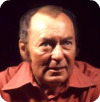 feelings about the business aspects of his profession.
feelings about the business aspects of his profession.
John Altman once had Al Cohn as a houseguest, and Al took John to meet Woody Herman. Al introduced him, saying, "John has a big band." Woody grabbed John's outstretched hand, looked earnestly into his eyes, and asked, "Why?"
To read all of Bill's column, go here.
San Francisco pianist Roberta Mandel sent this excerpt from an interview with drummer Shelly Manne. The story has been around for a long time. I haven't been able to track down the source of the interview, but anyone who has dealt with ignoramus producers will hear the ring of truth.
Interviewer:Have you ever gone into the studio and had someone say, "I want you to sound like the guy who did the drums on ... ?"
Shelly Manne:
I did a date with Jimmy Bowen, the song was "Fever." I had never worked with Jim, but I had made the original record of "Fever" with Peggy Lee. It actually said on my part, "play like Shelly Manne." So I played it just like I played it originally. The producer stormed out of the control room, walked over to me and said "Can't you read English? It says "play like Shelly Manne."
When I told him I was Shelly Manne, he turned around and went back into the booth. I think he's selling cars now.
James Moody is in Detroit this week. Mark Stryker, the music critic of The Detroit Free Press, heralded the event with a column that begins:
James Moody is my hero, and he should be yours. At 84, the irrepressible saxophonist and flutist remains a ferociously creative musician, playing with passion, energy and a sense of wonder at the endless possibilities of music.
Stryker provides a sketch of Moody's career, then a section that includes this exchange:
Q: Do you practice every day?
A: I try to. If I don't, I get a little cranky.
A sidebar to the column describes a few recommended Moody albums. To read the whole thing, go here.
Mark Stryker sent a couple of Moody anecdotes as Rifftides supplements to his column.
I heard two stories in recent days that encapsulate Moody's lifelong approach to learning and evolving as a musician. Dave Liebman toldme that one of his early tours with Elvin Jones was part of package with a Giants of Jazz group that included Moody. Moody comes to the back of the bus to ask Liebman and fellow saxophonist Steve Grossman to write out some stuff for him. At one point, Illinois Jacquet turns around and shouts something like, "They ain't into nuthin'" -- at which point Moody says to them, "Don't listen to moldy figs."
Then James Carter told me he was on a tour once with Moody and every day it was, "You show me something on the horn and I'll show you something." Those two stories occurred some 30 years apart.
The Rifftides staff thanks Mr. Stryker.
For a sample of Moody's energy, sound and harmonic inventiveness, here is a performance of Dizzy Gillespie's "Ow" at a Swiss festival in 1985, when Moody was a mere 60 years old. The composer is on trumpet. The bassist is Ray Brown, who was on Gillespie's 1940s big band with Moody. Gene Harris is the pianist, Grady Tate the drummer.
Wednesday night, the 2010 NEA Jazz Master awards went to pianists Kenny Barron, Cedar Walton and Muhal Richard Abrams; arranger, composer and band leader Bill Holman; saxophonist and flutist Yusef Lateef; vibrahaphonist Bobby Hutcherson; singer  Annie Ross (pictured at the ceremony); and record producer George Avakian. They received their medals and checks in a National Endowment For The Arts ceremony at Lincoln Center. To read accounts of the event by Nate Chinen of The New York Times and my artsjournal.com colleague Howard Mandel, click on their names in this sentence.
Annie Ross (pictured at the ceremony); and record producer George Avakian. They received their medals and checks in a National Endowment For The Arts ceremony at Lincoln Center. To read accounts of the event by Nate Chinen of The New York Times and my artsjournal.com colleague Howard Mandel, click on their names in this sentence.
Congratulations to all of the recipients.
An American jazz master who relocated to Europe nearly four decades ago died yesterday in Denmark hours after eight of his peers were honored in New York. Drummer Ed Thigpen succumbed to heart and lung problems in a hospital in Copenhagen, his home since 1972. He was 79. Thigpen was universally admired for his technique, which he applied with taste and musicianship that made him one of the best known drummers in the world during his long run as a member of the Oscar Peterson Trio. Here, he is featured with Peterson and Ray Brown in Italy in1961, playing Clifford Brown's "Daahoud."
I made the tenor sax - there's nobody plays like me and I don't play like anybody else. - Coleman Hawkins
If you like an instrument that sings, play the saxophone. At its best it's like the human voice. - Stan Getz
The tenor's got that thing, that honk, that you can get to people with. - Ornette Coleman
Speaking of Seamus Blake (see the item below), I looked for a video clip with him in action and came across one of the 28-year-old Blake in heavy company. He follows the late Michael Brecker in solo on Charles Mingus's "Goodbye Porkpie Hat." All of the other information I can give you is that this was in Japan in 1999 and that the pianist is David Kikoski. The camera work suggests that this was filmed during an earthquake of at least 6.5 on the Richter scale. You may want to take a seasickness pill before you watch. Still, the sound quality is good. Young Blake calmly follows an astonishing solo by an established master and develops one of his own.
Seamus Blake, Bellwether (Criss Cross). Since 1993, when Seamus Blake was 22, Gerry Teekens of Criss Cross Records has been traveling from Holland to New York to record the gifted Canadian tenor saxophonist. Teekens 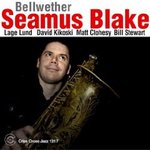 was one of the first recording executives to document Blake's work, and he has been doing it ever since. Bellwether is Blake's sixth Criss Cross album as a leader. He has been a sideman on 16 others. That is hardly overexposure for a musician of his inventiveness. Blake's technique makes him one of the fastest tenors since Johnny Griffin. His speed can be dazzling, but he employs it in the service of the stories he tells in his solos, not merely for display. Often, he spins out his inventions in long, lyrical lines, as in "A Beleza Que Vem" and "The Song That Lives Inside," two of his five compositions on the CD. The remaining tracks are John Scofield's "Dance Me Home" and the third movement of Claude Debussy's String Quartet in G Minor. Blake included the second movement of the quartet on his previous recording. The liner notes quote him as saying that he treats the Debussy movement as if it is a tune, "and we create a solo section out of some of the chords and loop that area. I guess you could say we sort of 'jazzify' it." Yes, you could say that. Blake's quintet includes his longtime collaborator pianist David Kikoski, guitarist Lage Lund, bassist Matt Clohesy and drummer Bill Stewart. Blake often works in Stewart's band. Whether it is the result of intensive rehearsal or of sympathetic listening among close colleagues, this band has a sense of contrast that is welcome in an age when many jazz groups operate on one dynamic level.
was one of the first recording executives to document Blake's work, and he has been doing it ever since. Bellwether is Blake's sixth Criss Cross album as a leader. He has been a sideman on 16 others. That is hardly overexposure for a musician of his inventiveness. Blake's technique makes him one of the fastest tenors since Johnny Griffin. His speed can be dazzling, but he employs it in the service of the stories he tells in his solos, not merely for display. Often, he spins out his inventions in long, lyrical lines, as in "A Beleza Que Vem" and "The Song That Lives Inside," two of his five compositions on the CD. The remaining tracks are John Scofield's "Dance Me Home" and the third movement of Claude Debussy's String Quartet in G Minor. Blake included the second movement of the quartet on his previous recording. The liner notes quote him as saying that he treats the Debussy movement as if it is a tune, "and we create a solo section out of some of the chords and loop that area. I guess you could say we sort of 'jazzify' it." Yes, you could say that. Blake's quintet includes his longtime collaborator pianist David Kikoski, guitarist Lage Lund, bassist Matt Clohesy and drummer Bill Stewart. Blake often works in Stewart's band. Whether it is the result of intensive rehearsal or of sympathetic listening among close colleagues, this band has a sense of contrast that is welcome in an age when many jazz groups operate on one dynamic level.
Kenny Dorham, The Flamboyan, Queens, NY, 1963 (Uptown). This broadcast recording is a treasure unearthed after 47 years. Alan Grant, who hosted the broadcast from an obscure club in an outer borough of New York City, preserved the tape of the program. It documents the early stage of the partnership between Dorham, one of the great trumpet soloists of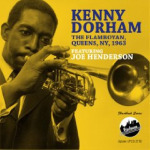 the bebop and post-bop eras, and the young tenor saxophonist Joe Henderson. Among the herd of Coltrane clones, Henderson was beginning in the early 60s to attract attention as an individual voice. He went on to be recognized as a modern master of the instrument. The pair made two Blue Note albums together under Dorham's leadership, three under Henderson's and one under Andrew Hill's. This unexpected and welcome preview of their symbiosis deserves a place alongside the Blue Notes.
the bebop and post-bop eras, and the young tenor saxophonist Joe Henderson. Among the herd of Coltrane clones, Henderson was beginning in the early 60s to attract attention as an individual voice. He went on to be recognized as a modern master of the instrument. The pair made two Blue Note albums together under Dorham's leadership, three under Henderson's and one under Andrew Hill's. This unexpected and welcome preview of their symbiosis deserves a place alongside the Blue Notes.
Dorham's solo on "Dorian" includes a quote from "I Get The Neck of the Chicken," an unlikely insertion into a modal piece and typical of his subtle wit. The lyricism of his work on "I Can't Get Started," "Summertime" and an early version of his composition "Una Mas" is based in the warmth of his sound and the depth of his unique exploitation of chords. It is a reminder of why nearly half a century later Dorham is an influence on the harmonic thinking of young players. Henderson, fully formed by 1963, solos with daring, passion and tonal qualities that make him immediately recognizable. The rhythm section of pianist Ronnie Matthews, bassist Steve Davis and drummer J.C. Moses is solid and effective despite Matthews having to accommodate to a horrid piano. The CD presents the club performance intact as a broadcast. Grant's announcements are on tracks that can be programmed out by those who don't want to hear them on repeated listenings, but they are reminders that there was a time when little clubs presented major players and radio stations did live remotes.
Sam Sadigursky, words project iii miniatures (New Amsterdam). As we pointed out in a Rifftides posting two years ago today, jazz and poetry never really became a movement. Over the past 90 years or so, the hybrid  form has had a few peak periods and some embarrassing lows. On the strength of Sam Sadigursky's work, we may be at one of the peaks. This is Sadigursky's third CD of poetry set to music or, to be more accurate, poetry integrated with music. His voice, guitar and reeds are in play, along with the voice, trumpet and keyboards of Michael Leonhart. They also use a collection of miscellaneous instruments including Sadigursky's glockenspiel and Leonhart's pump organ and waterphone.
form has had a few peak periods and some embarrassing lows. On the strength of Sam Sadigursky's work, we may be at one of the peaks. This is Sadigursky's third CD of poetry set to music or, to be more accurate, poetry integrated with music. His voice, guitar and reeds are in play, along with the voice, trumpet and keyboards of Michael Leonhart. They also use a collection of miscellaneous instruments including Sadigursky's glockenspiel and Leonhart's pump organ and waterphone.
Sadigursky employs several womens' voices to read poetry by Carl Sandburg, William Carlos Williams, Emily Dickinson, Maxim Gorky, Kenneth Patchen, contemporary poets David Ignatow, Maureen N. McLane, Sadi Ranson-Polizzetti and others. The poems are rightly described as miniatures because of their length, not their ideas. This is a far cry from a band wailing a blues as a poet reads. There seems to be little improvisation except in the readers' timing, phrasing and inflections. Yet, the work generally has the feeling of jazz spontaneity. Ignatow's brief "Content" becomes a wordscape of intersecting lines. Gorky's "O Muzyke Tostykh" is his late 1920s screed against the middle class infatuation with jazz, which he called the music of degenerates. Sadigursky sets it to a background voiced in minor for bass clarinets, flute, trumpet, glockenspiel and percussion. Through repetition, the four lines of Williams's "El Hombre" become a mantra riding on the insistence of light Latin rhythm. And so it goes, each poem treated differently, each rewarding the listener's attention and effort.
BRIEFLY
John Stowell, Anson Wright, The Sky At Our Feet. Anson Wright, Tim Gilson, Ukiah's Lullaby (Open Path). All of the poetry on The Sky At Our Feet is by Wright. It evokes the beauty and mystery of Chaco Canyon, New Mexico, in the American desert 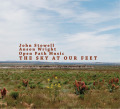 Southwest. John Stowell reads the poems and accompanies himself on guitar, in some cases overdubbing instruments so that the starkly etched imagery of Wright's words stands out against the ripples and shimmers of Stowell's music and what Wright's web site calls "light electronic scores." Those augmentations don't detract from Stowell's rich backgrounds. A sensitive and resourceful guitarist turns out to be a fine speaker of poetry.
Southwest. John Stowell reads the poems and accompanies himself on guitar, in some cases overdubbing instruments so that the starkly etched imagery of Wright's words stands out against the ripples and shimmers of Stowell's music and what Wright's web site calls "light electronic scores." Those augmentations don't detract from Stowell's rich backgrounds. A sensitive and resourceful guitarist turns out to be a fine speaker of poetry.
Wright is a guitarist as well as a poet. In that role, he devotes Ukiah's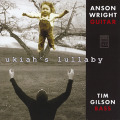 Lullaby to duets with bassist Gilson. Six of the tunes are his, four Gilson's. Wright's "Orion" has the flavor of the kind of modal structures Miles Davis pioneered with "Milestones" and "So What." They enhance harmonic interest through the spareness of Wright's strategic chords and melody lines and Gilson's tuning of his bass in fifths a la the late Red Mitchell. Gilson's ballad "Sometimes There Are No Words" is beautifully bowed by the bassist.
Lullaby to duets with bassist Gilson. Six of the tunes are his, four Gilson's. Wright's "Orion" has the flavor of the kind of modal structures Miles Davis pioneered with "Milestones" and "So What." They enhance harmonic interest through the spareness of Wright's strategic chords and melody lines and Gilson's tuning of his bass in fifths a la the late Red Mitchell. Gilson's ballad "Sometimes There Are No Words" is beautifully bowed by the bassist.
Mike Longo Trio, Sting Like A Bee (CAP). The remarkable, and remarkably unheralded, pianist's new CD is a sequel to his --what else?-- Float Like A Butterfly of 2007. The Oscar Peterson protégé and Dizzy Gillespie rhythm section stalwart stings as effectively as he floats, opening with Wayne Shorter's "Speak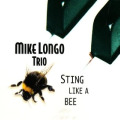 No Evil" and closing unaccompanied with a righteously two-fisted take on Gillespie's "Kush." Along the way, Longo, bassist Bob Cranshaw and drummer Lewis Nash explore pieces by Clifford Brown, Herbie Hancock, Wayne Shorter, Kurt Weill, Leonard Bernstein and Cole Porter. They combine delicacy and strength in a compelling treatment of Clare Fisher's "Morning" and radiate Charlie Parker's bop spirit in Longo's "Bird Seed," which could profitably have gone on much longer. Riches are unlikely for jazz musicians, but Longo surely deserves a bigger portion of fame.
No Evil" and closing unaccompanied with a righteously two-fisted take on Gillespie's "Kush." Along the way, Longo, bassist Bob Cranshaw and drummer Lewis Nash explore pieces by Clifford Brown, Herbie Hancock, Wayne Shorter, Kurt Weill, Leonard Bernstein and Cole Porter. They combine delicacy and strength in a compelling treatment of Clare Fisher's "Morning" and radiate Charlie Parker's bop spirit in Longo's "Bird Seed," which could profitably have gone on much longer. Riches are unlikely for jazz musicians, but Longo surely deserves a bigger portion of fame.
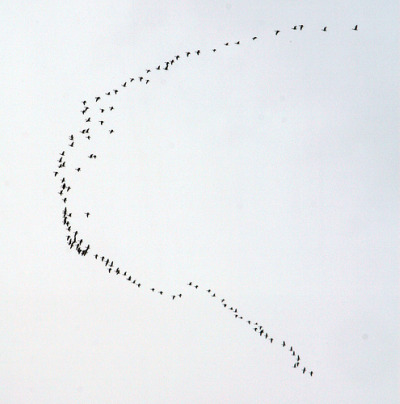
My guess is that these were not migrating geese, but permanent residents of the area, the ones we see year 'round on golf courses and along streams. After all, they weren't heading south. Why so many of them flew nearly together rather than in their usual solitary flocks, I'll leave to ornithologists. I am simply grateful for the timing of that walk.

If you feel the urge, don't be afraid to go on a wild goose chase. What do you think wild geese are for, anyway? - Will Rogers
Tonight I heard the wild goose cry,
Wingin' north in the lonely sky.
Tried to sleep, it weren't no use,
'Cause I am a brother to the old wild goose.
-- 1950 hit record for Frankie Laine, music and lyrics by Terry Gilkyson
If you are puzzling over the course jazz is taking in the second decade of the new century, this would be a good weekend to be in New York at the Winter Jazzfest. The event is packed with young artists making waves that excite fans their ages and younger, and frustrate many older listeners who have rigid convictions about what constitutes jazz. There is a wide range of musicians and styles, but the prevailing direction is forward, not back. It is an intriguing festival that has Jenny Scheinman, Dr. Lonnie Smith, Jason Moran and Linda Oh under the same umbrella. The festival takes place in several Greenwich Village clubs. Nate Chinen's piece in The New York Times summarizes what listeners can expect. Here is one of his descriptions:
Ms. Scheinman, a violinist, and Mr. Moran, a pianist, both favor a direct but slightly warped sense of melody, balancing the rustic and the urbane. Their duo rapport should be a genuine conversation.
To read the whole article, go here. To help you get in the mood for some of what you might encounter if you attend, this video has Ms. Scheinman with bassist Ben Allison's band at the Jazz Standard last fall. Allison is also on the festival this weekend. Shane Endsley is the trumpeter, Steve Cardenas the guitarist, Rudy Royston the drummer.
A memorial service for Stacy Rowles is set for Sunday, January 10, in the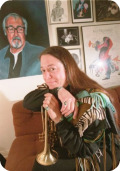 auditorium of the Musicians Union local in Hollywood, California. The growing list of more than fifty musicians who will perform in tribute includes Pete Christlieb, Joe LaBarbera, Charlie and Sandi Shoemake, Gary Foster and Mike Melvoin. The trumpeter and singer died in late October of injuries from an automobile accident. She was the daughter of pianist Jimmy Rowles.
auditorium of the Musicians Union local in Hollywood, California. The growing list of more than fifty musicians who will perform in tribute includes Pete Christlieb, Joe LaBarbera, Charlie and Sandi Shoemake, Gary Foster and Mike Melvoin. The trumpeter and singer died in late October of injuries from an automobile accident. She was the daughter of pianist Jimmy Rowles.
The affair will start at 11:00 a.m. and run into the evening. From the organizers' invitation:
Please be our guest, we'll be serving tri-tip and chicken with beer, wine and softer things at the bar. If you make a dish you are proud of, you are welcome to bring a taste for the table. One of the rules of the house when Stacy entertained was 'nobody leaves hungry', and we never did!
Rifftides reader Ty Newcomb sent a link to video of the Dutch singer Fay Claassen doing Gerry Mulligan's "Line for Lyons." After enjoying it, I noticed that YouTube has another version of the piece by The Dave Brubeck Quintet. What to do? Why, show you both, of course.
First, we see and hear the composer with Brubeck, Paul Desmond, Jack Six and Alan Dawson at the Berlin Jazz Festival in 1972. The director goes berserk with reverse zooms out of the stage lights, but a little dizziness is a small price to pay for a fine performance. Brubeck enjoys the work of his compadres and joins them in a round (so to speak) of counterpoint. Mulligan, sporting his old-man-of-the-mountains look that year, wrote and recorded the tune in the key of G 20 years before, but Desmond preferred it in B-flat and that's where they play it here.
If you're keeping track, Fay Claassen also chooses B-flat. She plays Chet Baker to Jan Menu's Mulligan in an arrangement that thrives on tempo changes. Hein van de Geyn is the bassist. John Engels is on drums.
Among her other accomplishments, Ms. Claasen is a Chet Baker specialist. This double CD is devoted to her interpretations of his trumpet solos and his vocals.
On his JazzWax blog, Marc Myers begins a series about pianist Dick Hyman. What a good idea. The first installment of the interview adds a video clip of Hyman and Billy Taylor doing a two-piano duet on "Hot House." If you thought Hyman played only Scott Joplin and James P. Johnson, read Marc's interview, then watch that clip.
Gary Peacock and Marc Copland, Insight. Marc Copland, Alone (Pirouet). Copland's previous explorations on the fine German label Pirouet were four trio CDs and one by a quartet. 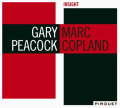 In these new ones, he pares down personnel but not his signature keyboard touch, melodic inventiveness or harmonic astringency. Peacock, the brilliant bassist, gets top billing in the duo album, but he and Copland are full partners. Laced with chance-taking adventure, their interaction nonetheless produces
In these new ones, he pares down personnel but not his signature keyboard touch, melodic inventiveness or harmonic astringency. Peacock, the brilliant bassist, gets top billing in the duo album, but he and Copland are full partners. Laced with chance-taking adventure, their interaction nonetheless produces an overall sense of contemplation and ease. The polish and unity of six compositions with joint credit to Peacock and Copland make it impossible to be sure which parts are written and which spontaneously created. Other provocative performances are of "All Blues" and "Blue in Green," associated with Miles Davis; a spritely take on Dave Brubeck's "In Your Own Sweet Way;" Copland's "River Run," all shimmer and mystery; and Peacock jauntily plucking the lead in the 80-year-old standard, "Sweet and Lovely."
an overall sense of contemplation and ease. The polish and unity of six compositions with joint credit to Peacock and Copland make it impossible to be sure which parts are written and which spontaneously created. Other provocative performances are of "All Blues" and "Blue in Green," associated with Miles Davis; a spritely take on Dave Brubeck's "In Your Own Sweet Way;" Copland's "River Run," all shimmer and mystery; and Peacock jauntily plucking the lead in the 80-year-old standard, "Sweet and Lovely."
Copland goes it Alone beginning with a softly insistent A-natural struck beneath the melody of Mal Waldron's "Soul Eyes." As the piece blooms, he returns to the ostinato now and then, a remembrance of things past. The figure helps frame the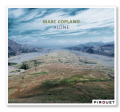 performance's sense of longing or nostalgia that continues through Joni Mitchell's "I Don't Know Where I Stand." Later, two other Mitchell songs become parts of an expressive whole in which Copland combines ten discrete compositions into a suite centered in wistfulness but not, perhaps, regret.
performance's sense of longing or nostalgia that continues through Joni Mitchell's "I Don't Know Where I Stand." Later, two other Mitchell songs become parts of an expressive whole in which Copland combines ten discrete compositions into a suite centered in wistfulness but not, perhaps, regret. 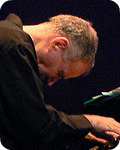 His "Night Whispers," "Into The Silence" and "Blackboard" are facets in the pensiveness, as are meditative abstractions on Stordahl and Weston's "I Should Care," Wayne Shorter's "Fall," and Bronislau Kaper's "Hi Lili Hi Lo" bringing us to the end with another ostinato, this time in C-major.
His "Night Whispers," "Into The Silence" and "Blackboard" are facets in the pensiveness, as are meditative abstractions on Stordahl and Weston's "I Should Care," Wayne Shorter's "Fall," and Bronislau Kaper's "Hi Lili Hi Lo" bringing us to the end with another ostinato, this time in C-major.
A news release that arrived with the CD has a quote from Copland.
There's no cut and dried technique other than this: The desire, when playing, not to hit a single note or a single chord unless It has a certain touch, a certain blend, a certain feel.
Copland has all of that, and these albums have staying power.
Freddie Hubbard, Without A Song (Blue Note). This collection of concert performances in England, previously unissued, captures the entire trumpeter. That means you get the daring explorer of chords, the exhibitionist technician and the balladeer who could break hearts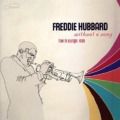 with his lyricism. There are moments, as on "Space Track," in which Hubbard is so unrestrained as to overwhelm the listener. There are others, notably in a long, wondrous version of "The Things We Did Last Summer," when his tenderness makes you forgive him anything. The discovery of the music on this CD helps fill out a vital chapter of Hubbard's touring career and makes his loss a year ago all the more regrettable. It is a logical companion to his MPS studio album The Hub of Hubbard, also recorded in December, 1969. The rhythm section is nearly the same in both, pianist Roland Hanna and drummer Louis Hayes, with Ron Carter on bass in England and Richard Davis in Germany.
with his lyricism. There are moments, as on "Space Track," in which Hubbard is so unrestrained as to overwhelm the listener. There are others, notably in a long, wondrous version of "The Things We Did Last Summer," when his tenderness makes you forgive him anything. The discovery of the music on this CD helps fill out a vital chapter of Hubbard's touring career and makes his loss a year ago all the more regrettable. It is a logical companion to his MPS studio album The Hub of Hubbard, also recorded in December, 1969. The rhythm section is nearly the same in both, pianist Roland Hanna and drummer Louis Hayes, with Ron Carter on bass in England and Richard Davis in Germany.
BRIEFLY
Dan Nimmer, Yours Is My Heart Alone (Venus). The fleet young pianist of the Lincoln Center Jazz Orchestra recruits the ace rhythm team of bassist Peter Washington and drummer Lewis Nash for an eclectic mix of standards, jazz classics and two of his own pieces. Surprise: Nimmer's joyous treatment of the Gil Evans rarity "Jambangle." No surprise: the bow to his hero Oscar Peterson with Peterson's arrangement of the title tune. Special treats: Johnny Hodges's "Squatty Roo," with a powerful Washington bass solo, and a driving "Falling in Love With Love."
Sachal Vasandani, We Move (MackAvenue). Vasandani's singing faintly suggests Kurt Elling, but that is less a matter of emulation than a similarity of attitude toward material. Without making an attempt, always doomed, to define jazz singing, suffice it to say that Vasandani does it and does it well. Jazz is in his phrasing, intonation and dynamics, whether on a chestnut like "Don't Worry About Me" or his own songs "Every Ocean, Every Star" and the title tune. His voice has a reedy quality that maintains through the registers of his considerable range and his note manipulations.
Bob Green, St. Peter Street Strutters (Delmark). Bob Green is a pianist from New York, one of the world's most dedicated Jelly Roll Morton specialists, now 88. He recorded this album at Preservation Hall in 1964 when he was visiting New Orleans. He plays the whey out of "Wolverine Blues," "The Pearls," "Sweet Substitute," King Oliver's "Snake Rag" and W.C. Handy's "Atlanta Blues," among others; fifteen pieces in all. The band's unusual instrumentation is piano, cornet (Ernie Carson), banjo (Steve Larner) and tuba (Shorty Johnson). I hadn't listened to Green for years and put this on wondering if he was as much fun as I remembered. He was.
I have been robbed of three million dollars all told. Everyone today isplaying my stuff and I don't even get credit. Kansas City style, Chicago style, New Orleans style, hell, they're all Jelly Roll style. --Jelly Roll Morton
When Jelly Roll said that he wrote his first jazz tunes in 1902, or that he used scat-singing as far back as 1907, there is not only no proof to the contrary, but Jelly's own considerable accomplishments in themselves provide reasonable substantiation. --Gunther Schuller in Early Jazz
He could back up everything he said by what he could do. --Omer Simeon
Film producer Andrew Thomas writes with news of what perhaps everyone but Jack Berry and I knew:
Like many fans of Vince Guaraldi, I make sure that Google sends me an alert every time he's mentioned in posts and blogs, so I was directed to this Rifftides page.
I was surprised by your suggestion that there is little evidence of Vince on film or tape. There is actually a decent amount, and much of it is included in the feature-length documentary I premiered with my partner Toby Gleason at the Monterey Jazz Festival last September -- including Vince on screen performing "Star Song" (with Bola Sete both in studio and live at the Trident), "Treat Street", "Samba de Orpheus", and more.... aswell as film of Vince rehearsing with the choir for the Grace Cathedral Jazz Mass, and performing on the road at various universities. (These are beyond the three Jazz Casual programs on which he appeared, and all of it restored and transferred in high definition... unlike those YouTube clips that someone ripped-off and posted without regard to quality or copyright.)
Of course, it's not hours of performance footage... but the program is scored using rare unpublished Vince recordings (from his private collection), as well as new performances by George Winston, Jon Hendricks and several others, and conversations with Dave Brubeck, John Handy, Dick Gregory, and... well, there are quite a few people who participated. Vince himself is featured in extensive on camera interviews as well.
The film is called "The Anatomy of Vince Guaraldi", and more information can be found at http://www.anatomyofvinceguaraldi.com
We're hoping that it will be in release both theatrically and on home video this year, should there be enough interest to warrant it.
If that happens, I'll look forward to reviewing the film.
On a New Years eve in the mid-1960s, my wife and I attended a dance with music by Duke Elllington. At midnight, Ellington nodded casually and the band concocted a head arrangement of "Auld Lang Syne" that sounded very much like this. As you listen, please accept the wishes of the Rifftides staff for a perfect 2010.
AJ Ads
AJ Blogs
AJBlogCentral | rssculture
Terry Teachout on the arts in New York City
Andrew Taylor on the business of arts & culture
rock culture approximately
Laura Collins-Hughes on arts, culture and coverage
Richard Kessler on arts education
Douglas McLennan's blog
Dalouge Smith advocates for the Arts
Art from the American Outback
Chloe Veltman on how culture will save the world
For immediate release: the arts are marketable
No genre is the new genre
David Jays on theatre and dance
Paul Levy measures the Angles
Judith H. Dobrzynski on Culture
John Rockwell on the arts
innovations and impediments in not-for-profit arts
Jan Herman - arts, media & culture with 'tude
dance
Apollinaire Scherr talks about dance
Tobi Tobias on dance et al...
jazz
Howard Mandel's freelance Urban Improvisation
Focus on New Orleans. Jazz and Other Sounds
Doug Ramsey on Jazz and other matters...
media
Jeff Weinstein's Cultural Mixology
Martha Bayles on Film...
classical music
Fresh ideas on building arts communities
Greg Sandow performs a book-in-progress
Harvey Sachs on music, and various digressions
Bruce Brubaker on all things Piano
Kyle Gann on music after the fact
Greg Sandow on the future of Classical Music
Norman Lebrecht on Shifting Sound Worlds
Joe Horowitz on music
publishing
Jerome Weeks on Books
Scott McLemee on books, ideas & trash-culture ephemera
theatre
Wendy Rosenfield: covering drama, onstage and off
visual
Public Art, Public Space
Regina Hackett takes her Art To Go
John Perreault's art diary
Lee Rosenbaum's Cultural Commentary
